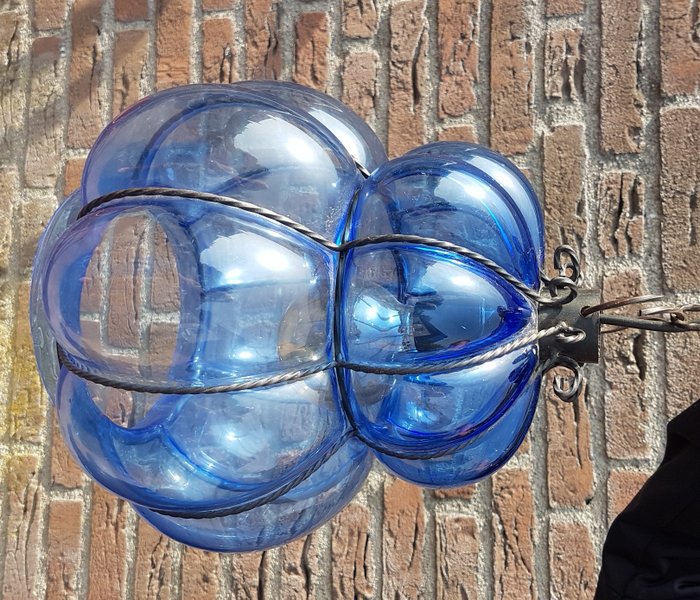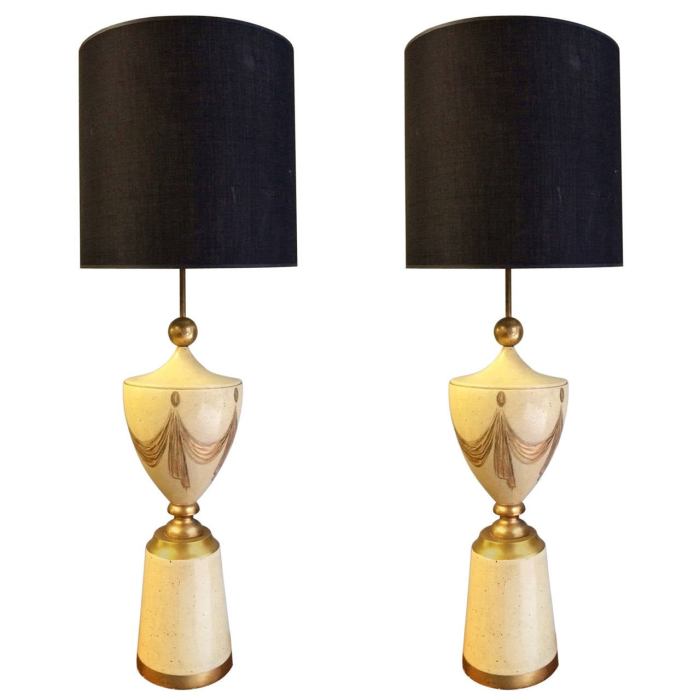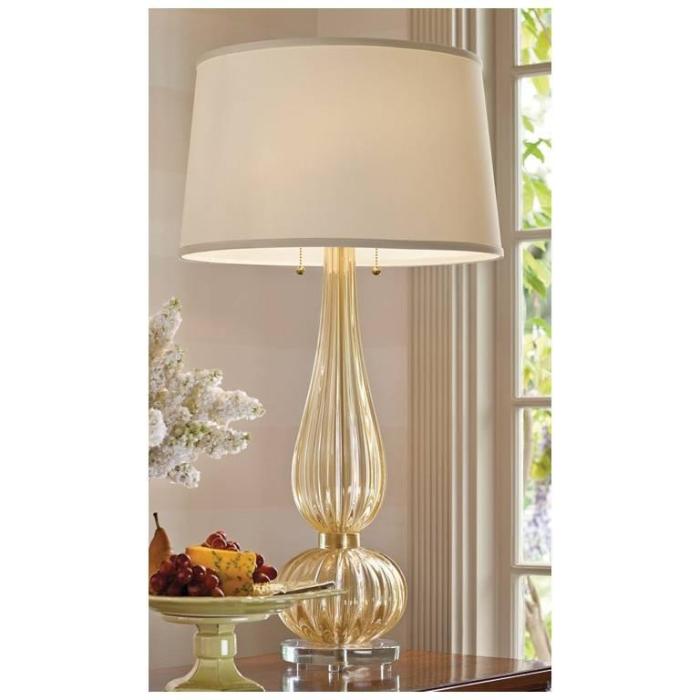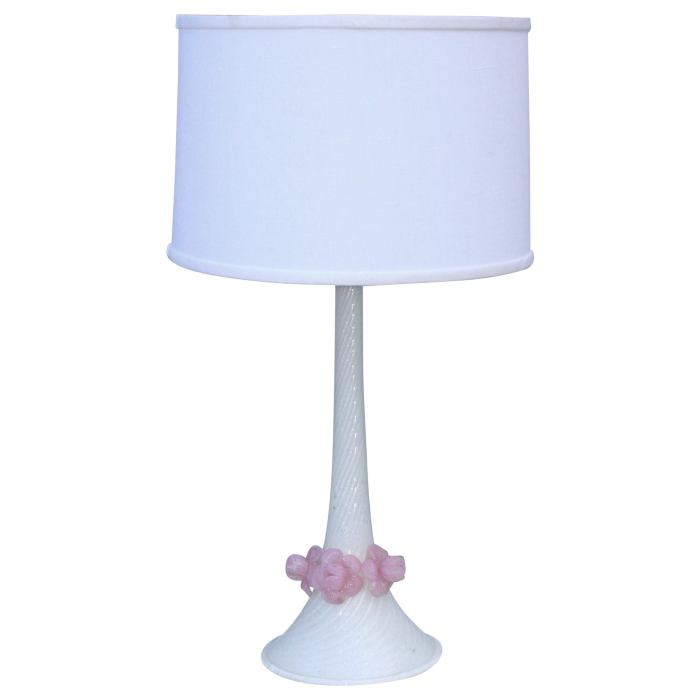Venetian lamps, with their exquisite designs and rich history, have captivated the world for centuries. Originating in the heart of Venice, these masterpieces of glassblowing artistry continue to illuminate homes and palaces alike, showcasing the unparalleled skills of Italian artisans.
From their humble beginnings to their contemporary interpretations, Venetian lamps have evolved into a symbol of elegance and sophistication. In this comprehensive guide, we delve into the captivating world of Venetian lamps, exploring their origins, design, materials, applications, and the enduring legacy they have left on the world of art and design.
Venetian Lamp Origins and History

Venetian lamps, renowned for their exquisite craftsmanship and timeless elegance, have a rich history deeply intertwined with the cultural heritage of Venice. Their origins can be traced back to the 13th century when Venetian glassmakers, renowned for their mastery, began crafting intricate glass objects, including lamps.
Over the centuries, Venetian lamps gained immense popularity, becoming symbols of opulence and luxury. They were highly sought after by wealthy patrons and adorned palaces, churches, and grand residences throughout Europe. The artisans of Venice developed innovative techniques to create lamps of unparalleled beauty and functionality, using a combination of blown glass, colored glass, and intricate metalwork.
The Murano Glassmakers
The island of Murano, located just a short distance from Venice, became the epicenter of Venetian glassmaking. The Venetian government, recognizing the importance of this industry, established strict regulations to protect the secrets of glassmaking and maintain the high quality of Venetian lamps.
Murano glassmakers were highly skilled artisans who dedicated their lives to perfecting their craft. They experimented with different techniques and materials, creating a vast array of lamp designs. Their work was not only aesthetically pleasing but also highly functional, with lamps providing ample illumination while adding a touch of elegance to any space.
Cultural Impact
Venetian lamps played a significant role in shaping the cultural landscape of Venice. They illuminated the city’s streets, canals, and palaces, creating a magical ambiance that captivated visitors from around the world.
In addition to their practical function, Venetian lamps also became objects of artistic expression. Artisans incorporated intricate designs, vibrant colors, and delicate details into their work, transforming lamps into works of art. Venetian lamps became a symbol of the city’s wealth, creativity, and cultural heritage.
Types and Styles: Venetian Lamp

Venetian lamps are renowned for their exquisite craftsmanship and diverse designs. They come in a wide array of types and styles, each with its unique characteristics and aesthetic appeal.
The size of Venetian lamps varies greatly, from petite table lamps to grand chandeliers that illuminate vast spaces. Their shapes are equally diverse, ranging from traditional bell-shaped pendants to intricate multi-tiered designs.
Murano Glass Lamps
Murano glass is a type of Venetian glass renowned for its exceptional clarity and vibrant colors. Murano glass lamps are handcrafted by skilled artisans on the island of Murano, using centuries-old techniques. These lamps are characterized by their delicate forms, intricate patterns, and luminous glow.
Blown Glass Lamps, Venetian lamp
Blown glass lamps are created by blowing molten glass into a mold. This technique allows for the creation of unique and complex shapes, such as twisted stems, ruffled edges, and intricate floral motifs. Blown glass lamps are often adorned with colorful embellishments, such as beads, crystals, or metal accents.
Chandeliers
Venetian chandeliers are elaborate lighting fixtures that serve as the centerpiece of many grand spaces. They are typically made of crystal or glass and feature multiple tiers of cascading lights. Venetian chandeliers are known for their opulence and grandeur, and they add a touch of sophistication and elegance to any setting.
Materials and Manufacturing
Venetian lamps are renowned for their exquisite craftsmanship and the use of high-quality materials. The primary material employed in their production is glass, which is meticulously blown and shaped by skilled artisans.
Venetian lamps, known for their intricate designs and vibrant colors, are a popular choice for home decor. If you’re looking for a unique and eye-catching piece, consider George Rodrigue ‘s artwork. His vibrant paintings and sculptures often feature images of Louisiana bayous and Cajun culture, and his use of color and texture would translate beautifully into a Venetian lamp.
Imagine a lamp with a base adorned with Rodrigue’s signature Blue Dog or a shade featuring a scene from his beloved Cajun landscapes.
Glassblowing
Glassblowing is a centuries-old technique that involves gathering molten glass on the end of a blowpipe and shaping it by blowing air into the molten material. Venetian glassblowers have mastered this art, creating intricate and delicate forms with remarkable precision.
Metalworking
Metalworking is another essential aspect of Venetian lamp production. Artisans utilize various metals, including brass, bronze, and iron, to craft the lamp’s frames, bases, and other decorative elements. These metal components not only provide structural support but also contribute to the lamp’s overall aesthetic appeal.
Other Techniques
In addition to glassblowing and metalworking, Venetian lamp makers employ various other techniques to enhance the lamps’ beauty and functionality. These include:
- Enameling:Applying colored glass powder to the surface of the glass and fusing it in a kiln.
- Gilding:Applying a thin layer of gold leaf to the metal components for a luxurious finish.
- Patination:Treating the metal surfaces with chemicals to create a distinctive aged or antique look.
Quality and Durability
Venetian lamps are renowned for their exceptional quality and durability. The high-quality glass used in their construction ensures clarity, brilliance, and resistance to thermal stress. The metal components are robust and corrosion-resistant, contributing to the lamp’s longevity. With proper care and maintenance, Venetian lamps can last for generations, becoming cherished heirlooms passed down through families.
Applications and Uses

Venetian lamps have found diverse applications throughout history, adorning both private and public spaces. Their exquisite craftsmanship and aesthetic appeal have made them a sought-after choice for various settings.
Homes
Venetian lamps have been a staple in Venetian homes for centuries. Their intricate designs and warm, diffused light create an inviting and sophisticated ambiance. From small bedside lamps to grand chandeliers, Venetian lamps complement any décor, adding a touch of elegance and charm.
Palaces
Venetian palaces are renowned for their opulent interiors, and Venetian lamps play a crucial role in enhancing their grandeur. Elaborate chandeliers adorned with Murano glass, gold leaf, and intricate carvings illuminate the palatial halls, creating a sense of awe and wonder.
Churches
Venetian churches are adorned with some of the most spectacular Venetian lamps. These lamps are often massive in scale and feature intricate religious motifs. They serve not only as sources of illumination but also as works of art that contribute to the spiritual atmosphere of the sacred space.
Aesthetic and Functional Value
Venetian lamps combine aesthetic beauty with functional value. Their delicate craftsmanship and intricate designs make them visually captivating, adding a touch of sophistication to any space. At the same time, they provide ample illumination, creating a warm and inviting ambiance.
Modern Interpretations and Trends

Contemporary Venetian lamps embrace innovation while honoring tradition. Designers explore fresh interpretations, incorporating new materials and technologies to create captivating lighting solutions.
The use of acrylic, glass, and metal in Venetian lamp design has gained prominence. These materials offer versatility, allowing for intricate shapes, vibrant colors, and modern aesthetics. LED technology has also transformed the functionality of Venetian lamps, providing energy efficiency and customizable lighting options.
Emerging Trends and Innovations
- Sustainability:Eco-friendly practices are influencing Venetian lamp design, with the use of recycled materials and sustainable production methods.
- Interactive Lighting:Lamps with touch-sensitive controls, motion sensors, and smartphone integration enhance user experience and create dynamic lighting environments.
- Geometric Forms:Modern Venetian lamps often feature bold geometric shapes, such as cubes, spheres, and pyramids, adding a contemporary touch to traditional designs.
Conservation and Restoration

Venetian lamps are significant cultural artifacts that require preservation for future generations. Their delicate nature and historical value necessitate proper conservation and restoration techniques.
Challenges and Techniques
Restoring Venetian lamps presents challenges due to their age, fragility, and intricate designs. Conservators must carefully assess the condition of each lamp and employ specialized techniques to preserve its original materials and aesthetics. These techniques include:
Cleaning
Removing dirt, grime, and tarnish without damaging the delicate glass or metal components.
Repairing
Mending broken or cracked glass using specialized adhesives or traditional techniques such as lead came.
Re-gilding
Restoring the gold leaf finish on metal components to its original luster.
Electrification
Updating the electrical system while preserving the lamp’s historical integrity.
Successful Conservation Projects
Numerous successful conservation projects have preserved Venetian lamps for posterity. One notable example is the restoration of the 18th-century “Murano Chandelier” at the Metropolitan Museum of Art in New York. Conservators painstakingly cleaned and repaired the chandelier, restoring its intricate glasswork and re-gilding its metal components.
The restored chandelier now serves as a testament to the enduring beauty and craftsmanship of Venetian lamps.
Concluding Remarks
Venetian lamps stand as a testament to the enduring power of human creativity and the pursuit of beauty. Whether adorning a grand palace or adding a touch of elegance to a modern home, these luminous works of art continue to inspire and captivate, ensuring their place as timeless treasures in the world of decorative arts.



